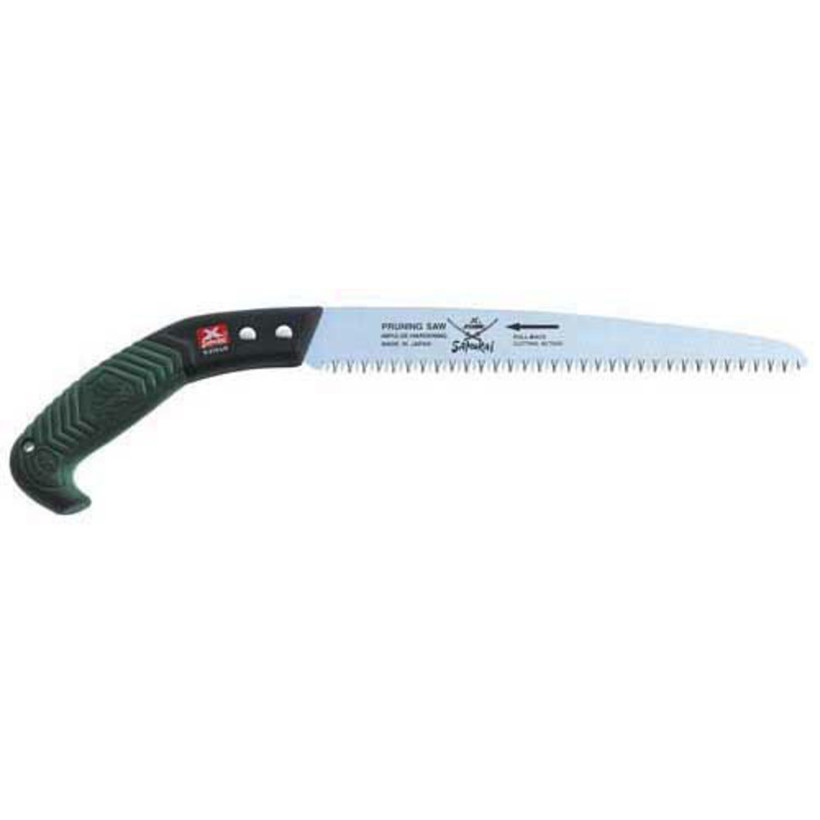Description
The Samurai Bushi Straight Pruning Saw w/ Scabbard is great for pruning in tight tree and shrub structures. The highly polished blade surface reduces sap build up and promotes resistance free strokes. Impulse hardened teeth for long life.
Details
JS240LH 9-1/2" (240mm) Samurai Bushi Straight Pruning Saw w/ Scabbard The Bushi is great for pruning in tight tree and shrub structures. The highly polished blade surface reduces sap build up and promotes resistance free strokes. Impulse hardened teeth for long life. Specifications: Manufacture: Samurai Length: 9-1/2" Teeth per inch: 6.35 Hardening: Impulse Replacement Blade Model #: S241LH Saw Blade Terms:Blade Profile: The two common blade profiles are "tapered" and "non tapered." The tapered blade is thicker at the bottom where the teeth are and thinner at the top following edge. On a tapered blade the teeth do not have "set" (pushed left and right) therefore the blade following the teeth must be thinner to prevent drag in the saw kerf. A non-tapered blade has the same thickness from the top to the bottom. The teeth on a non-tapered blade have "set" to create a wider kerf at the teeth so the remaining blade can follow through the cut without drag. Typically a "non tapered" blade is more rigid than the tapered blade. Tooth Style: The three sided or tri-edge tooth has edges on both sides and across the top of the tooth. This style tooth cuts much faster then the conventional two sided tooth. The advantage of the conventional two sided tooth is it is easier to sharpen. Teeth/inch Teeth per inches refers to the number of saw teeth in one running inch of saw blade. The smaller the number of teeth per inch the "coarser" the blades is. A blade with a higher number of teeth per inch is described as a fine tooth blade. Hardening: Impulse hardening is the most common method for hardening saw teeth. The process involves using electrical impulses to create a very hard layer on the saw tooth edge. The advantage of impulse hardening is a much longer tooth life. The disadvantage to of an impulse hardened tooth is it cannot be sharpened.
- Manufacturer Part Number:
- JS-240-LH
- Country of Manufacture:
- JP

